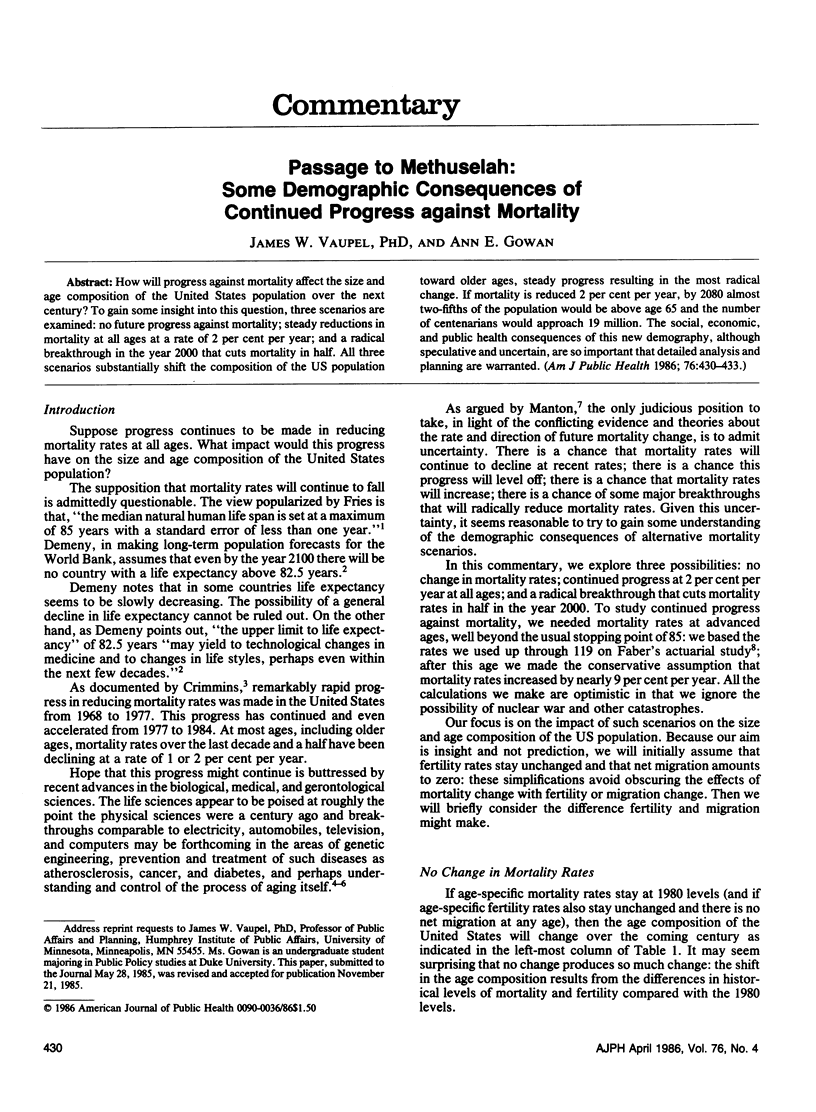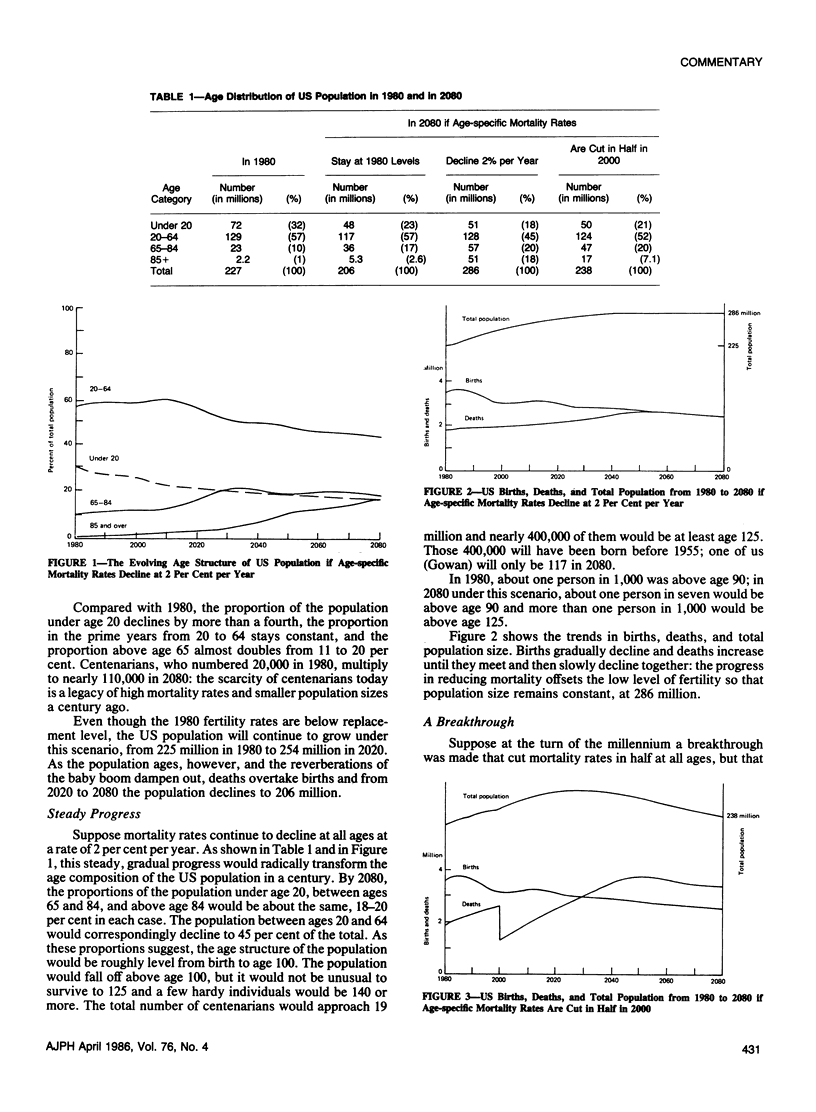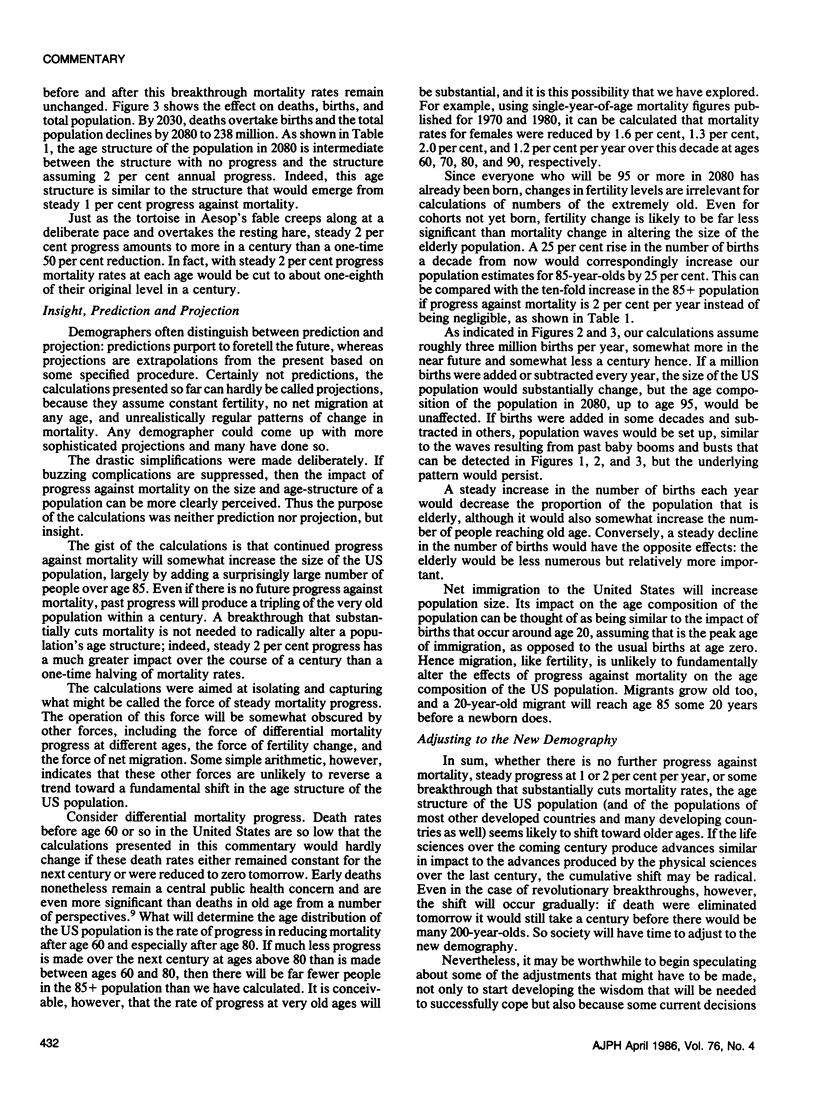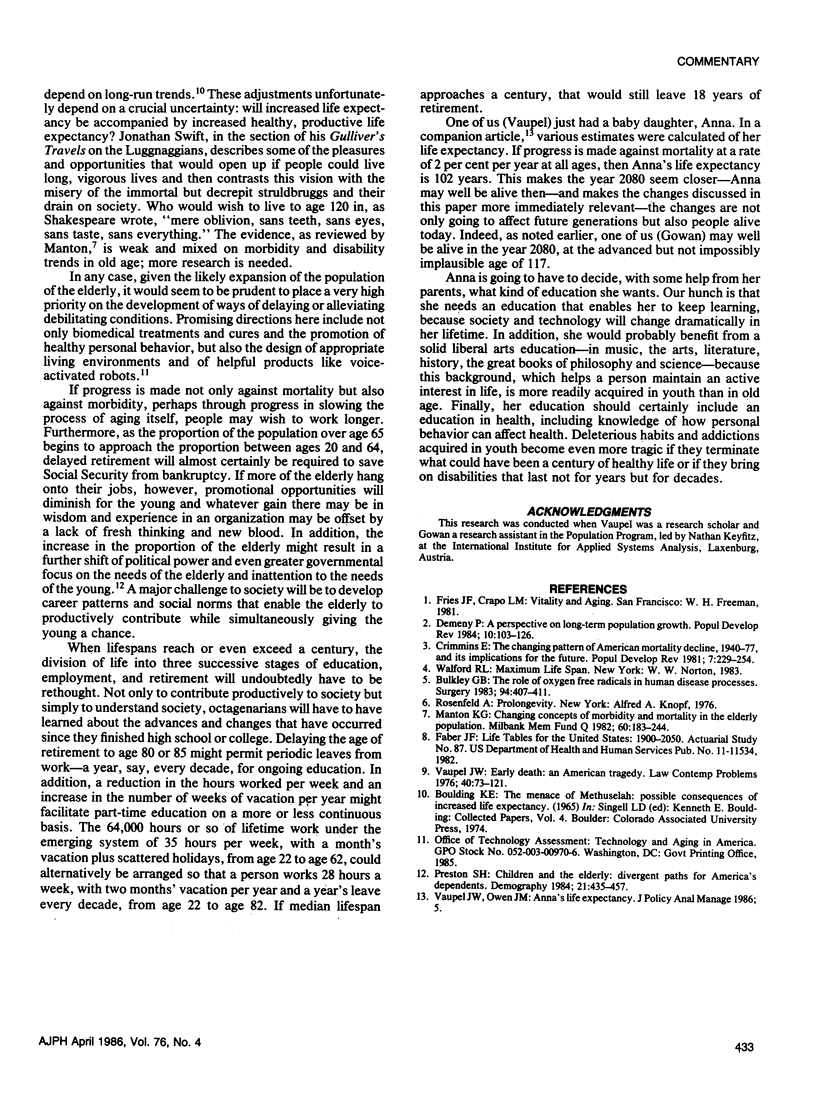Abstract
How will progress against mortality affect the size and age composition of the United States population over the next century? To gain some insight into this question, three scenarios are examined: no future progress against mortality; steady reductions in mortality at all ages at a rate of 2 per cent per year; and a radical breakthrough in the year 2000 that cuts mortality in half. All three scenarios substantially shift the composition of the US population toward older ages, steady progress resulting in the most radical change. If mortality is reduced 2 per cent per year, by 2080 almost two-fifths of the population would be above age 65 and the number of centenarians would approach 19 million. The social, economic, and public health consequences of this new demography, although speculative and uncertain, are so important that detailed analysis and planning are warranted.
Full text
PDF



Selected References
These references are in PubMed. This may not be the complete list of references from this article.
- Bulkley G. B. The role of oxygen free radicals in human disease processes. Surgery. 1983 Sep;94(3):407–411. [PubMed] [Google Scholar]
- Manton K. G. Changing concepts of morbidity and mortality in the elderly population. Milbank Mem Fund Q Health Soc. 1982 Spring;60(2):183–244. [PubMed] [Google Scholar]
- Preston S. H. Children and the elderly: divergent paths for America's dependents. Demography. 1984 Nov;21(4):435–457. [PubMed] [Google Scholar]


